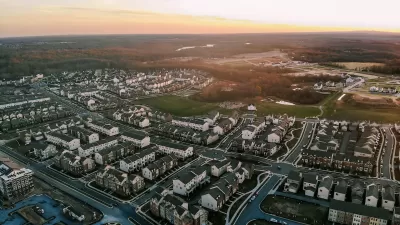Montgomery County just passed a slew of regulatory and legislative changes aimed at improving affordable housing. One writer suggests several more.

In a guest opinion piece published in Greater Greater Washington, Mike English describes the major changes to housing policy in Montgomery County that could pave the way for more affordable housing.
As English explains, “Faced with a tight budget and rising home prices, the County Council has looked for ways to increase tax revenue while reducing burdens on tenants, who make up over one-third of the county’s households.”
Among the steps the county took is a rent stabilization law, the first in the county in 40 years. “The new law caps rent increases at 6% each year, or 3% over the rate of inflation (whichever is lower), and allows landlords to “bank” any rent increases they don’t take advantage of for the following year.” The law starts applying to buildings 23 years after they’re built, in part out of fear that applying it to newer buildings would slow development.
Unfortunately, English notes, “vibes matter,” and some of these laws could appear unfriendly to new businesses and developers. “That doesn’t mean we shouldn’t do them, but we need to start sending better signals by passing reforms that will help directly, but also help counter the (partially fair, partially unfair) perception that Montgomery County is hostile to growth and investment.”
English recommends several steps now that rent stabilization passed. These include “building on our approved general plan, Thrive 2050, and passing the zoning changes it recommends, chiefly upzoning for more homes near transit.” English also suggests eliminating parking requirements, reforming impact fees on the sale of older homes, and encouraging the construction of smaller houses.
FULL STORY: Montgomery County just passed rent stabilization. Now what?

Planetizen Federal Action Tracker
A weekly monitor of how Trump’s orders and actions are impacting planners and planning in America.

Map: Where Senate Republicans Want to Sell Your Public Lands
For public land advocates, the Senate Republicans’ proposal to sell millions of acres of public land in the West is “the biggest fight of their careers.”

Restaurant Patios Were a Pandemic Win — Why Were They so Hard to Keep?
Social distancing requirements and changes in travel patterns prompted cities to pilot new uses for street and sidewalk space. Then it got complicated.

Platform Pilsner: Vancouver Transit Agency Releases... a Beer?
TransLink will receive a portion of every sale of the four-pack.

Toronto Weighs Cheaper Transit, Parking Hikes for Major Events
Special event rates would take effect during large festivals, sports games and concerts to ‘discourage driving, manage congestion and free up space for transit.”

Berlin to Consider Car-Free Zone Larger Than Manhattan
The area bound by the 22-mile Ringbahn would still allow 12 uses of a private automobile per year per person, and several other exemptions.
Urban Design for Planners 1: Software Tools
This six-course series explores essential urban design concepts using open source software and equips planners with the tools they need to participate fully in the urban design process.
Planning for Universal Design
Learn the tools for implementing Universal Design in planning regulations.
Heyer Gruel & Associates PA
JM Goldson LLC
Custer County Colorado
City of Camden Redevelopment Agency
City of Astoria
Transportation Research & Education Center (TREC) at Portland State University
Camden Redevelopment Agency
City of Claremont
Municipality of Princeton (NJ)





























